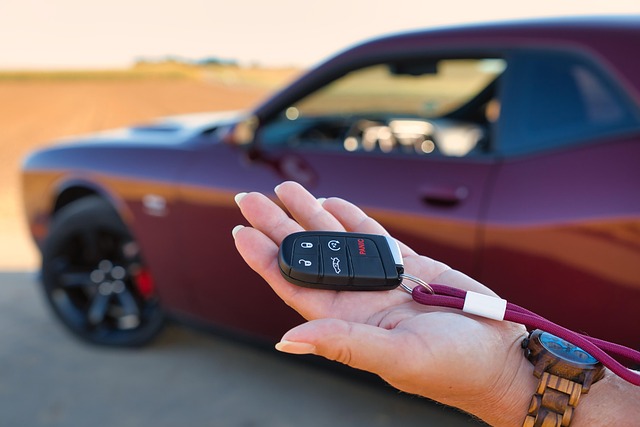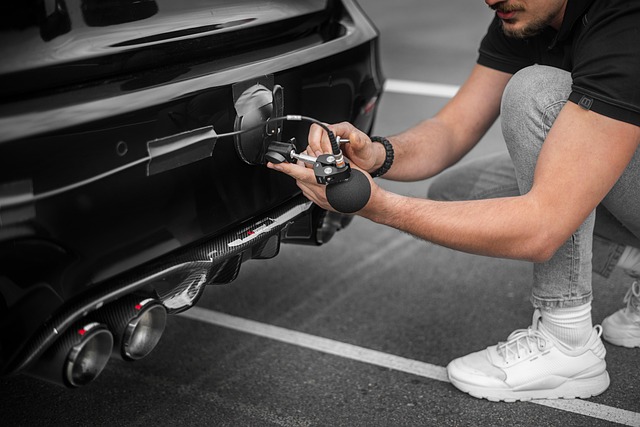Looking to register your car in California? This comprehensive guide walks you through the process, from understanding key requirements to verifying your Vehicle Identification Number (VIN) accurately. Gather all necessary documents, complete the online or in-person registration process, and pay the associated fees. A successful VIN verifier is crucial for a smooth experience. Follow these steps to ensure your car is legally registered in the Golden State.
- Understand California Car Registration Requirements
- Gather Necessary Documents for Car Registration
- Verify Vehicle Identification Number (VIN) Accurately
- Complete Online or In-Person Registration Process
- Pay Car Registration Fees and Receive Plate
Understand California Car Registration Requirements

Before registering your car in California, it’s crucial to understand the state’s specific requirements. One key aspect is ensuring your vehicle has a valid and accurate Vehicle Identification Number (VIN) verifier or mobile VIN inspection completed. This process verifies the authenticity of your car’s VIN, which is essential for legal registration. In California, a mobile VIN verification service can be utilized, making it convenient to check your vehicle’s history and ensure all details are in order.
During registration, you’ll need to present a current and valid VIN record, along with other necessary documents. A mobile vin verifier or inspection can help streamline this process by providing immediate access to your car’s history, including any previous accidents, maintenance records, and ownership changes. This ensures a smoother registration experience and helps prevent potential issues down the line.
Gather Necessary Documents for Car Registration

Before you begin the registration process, it’s crucial to gather all the essential documents required by the California Department of Motor Vehicles (DMV). One critical piece is the Vehicle Identification Number (VIN) verification. This can be done through a mobile VIN inspection or by using an online tool provided by the DMV. A reliable method is to employ a mobile VIN verifier, which allows for a quick and accurate check of your vehicle’s history directly from your smartphone.
Additionally, you’ll need proof of ownership, typically in the form of a title or bill of sale, along with valid identification documents such as a driver’s license or passport. Insurance paperwork is also essential, confirming that your car is insured for road use. Having these documents ready ensures a smoother registration process and prevents potential delays at the DMV.
Verify Vehicle Identification Number (VIN) Accurately

When preparing to register your car in California, one of the crucial steps is ensuring your Vehicle Identification Number (VIN) is accurate and verified. This unique 17-character code is a vital part of your vehicle’s identity, used for tracking its history and ownership. It’s essential to have this number checked carefully to avoid any discrepancies later on.
Utilize a reliable VIN verifier, whether it’s through an online tool or a professional mobile vin inspection service, to cross-reference the number with authorized databases. This step is particularly important when buying a used car, as you want to make sure there are no hidden issues or questionable histories associated with the vehicle. A simple and accurate vin inspection can save you time and potential headaches down the road.
Complete Online or In-Person Registration Process

In California, registering your car can be done either online or in-person at a local Department of Motor Vehicles (DMV) office. The process starts with gathering essential documents, including your vehicle’s registration from the previous state (if applicable), proof of insurance, and identification. For added convenience, many services offer mobile vin verification and mobile vin inspection options, ensuring a smooth experience regardless of your preference.
If completing the registration online, you’ll need to input your Vehicle Identification Number (VIN) to access specific details about your car. This step is crucial for accurate and efficient processing. Alternatively, visiting a DMV field office involves filling out forms, passing a vehicle inspection, and providing necessary paperwork. Both methods culminate in receiving your new California vehicle registration plates and documents.
Pay Car Registration Fees and Receive Plate

After verifying your vehicle’s identity through a VIN (Vehicle Identification Number) verifier or completing a mobile VIN inspection, the next step in registering your car in California is to pay the necessary registration fees. These fees cover various costs associated with maintaining road safety and infrastructure. You can typically pay these fees online through the California Department of Motor Vehicles (DMV) website, over the phone, or at a nearby DMV field office.
Once your payment is processed, you will be issued a vehicle registration certificate and license plates. In some cases, you might receive temporary tags while waiting for your permanent plates. These plates should be displayed on your vehicle’s windows as required by California law. Ensure that all fees are paid in full to avoid any penalties or additional charges when claiming your plates.
Registering a car in California is a straightforward process that requires understanding the state’s requirements and gathering essential documents. By accurately verifying the Vehicle Identification Number (VIN) using a reliable VIN verifier, you can ensure a smooth registration experience. Whether completing the process online or in-person, it involves filling out forms, paying fees, and receiving your custom license plate. Remember to keep all registration documents up-to-date for seamless future renewals.



